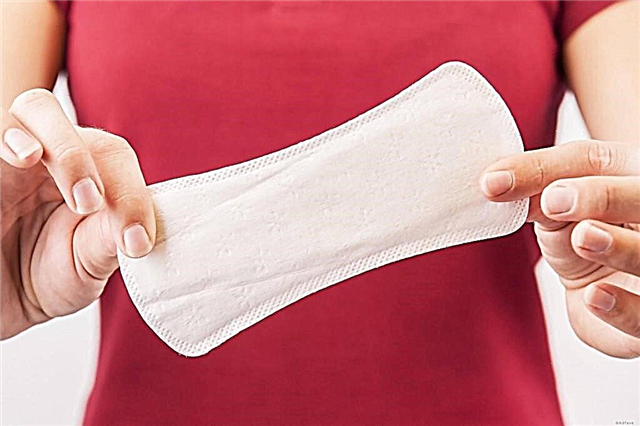
Pediatric gynecology - the question is very intimate and often quite closed. Diseases of the female genital organs can occur even in newborn girls and very young babies.

What it is?
Inflammations of the external female genital organs are called vulvitis. These include: the vestibule of the vagina, the labia minora and majora, the clitoris and the outer part of the urethra. Vulvitis is most common in babies under 10 years old. The disease in infants is much less common. In adolescents, after puberty, vulvitis is also formed quite infrequently.
This anatomical region is very well supplied with blood and innervated. Any inflammatory changes in this area provoke the appearance of very unfavorable symptoms that bring severe discomfort to the baby. According to statistics, vulvitis is most often recorded in babies and in older women with genital dystrophy.

The effect of hormones on the reproductive system is very significant. Any fluctuations affect the epithelial cells of the female genital organs. With prolonged exposure, this can provoke the development of vulvitis. Inflammation of the female genital organs is highly dependent on the basal hormone levels. Diseases of the endocrine system contribute to the development of vulvitis.
The baby's external genitals are sterile. By the end of the first week, opportunistic microorganisms settle on them and the pH of the vagina shifts. In an infant, it is neutral or slightly alkaline. By the age of 10, the vagina is colonized with lactobacilli. Their normal concentration leads to a shift in the pH of the medium to 4-4.5.


Before the onset of menstruation, babies have practically no local immunity. Any infections that settle on the walls of the external genital organs can lead to the development of local inflammation. With a reduced general immunity, this leads to a rapid progression of the disease.
Causes
Various reasons can lead to the development of inflammatory diseases of the female genital organs. According to the primary onset of symptoms, all vulvitis can be acute and chronic. With the chronicity of the process, the unfavorable manifestations of the disease can be repeated again and again for several years. Chronic vulvitis requires the selection of the correct treatment and regular monitoring by a pediatric gynecologist.
The following provoking reasons can lead to the development of vulvitis in babies:
- Feature of the anatomical zone. The labia majora are more open in girls than at an older age. A reduced number of lactobacilli leads to a change in the pH of the vaginal environment. Sufficiently loose and easily traumatized mucous membranes of the genital organs are overly susceptible to any infectious and non-infectious effects.
- Poor personal hygiene. Excessive washes can lead to an even greater change in vaginal pH. This contributes to the development of inflammation in the external genital area. If the personal hygiene schedule is constantly violated, then this can also contribute to the appearance of vulvitis.

- Incorrectly fitted diapers. Long-term wearing can lead to constant exposure to the external genitalia. The use of diapers on girls for a long time can provoke a change in the pH of the environment in babies. Also, girls may experience various irritations and rashes in the genital area.

- Infection with helminths. Most often, vulvitis occurs when infected with ascaris or pinworms. These parasites in the process of their vital activity release various toxic products. They cause severe irritation and redness in the genital area. Also, helminth eggs can enter the anogenital zone, causing strong allergic variants of vulvitis in the baby.

- Various infections. Infection with viruses, bacteria, or fungal infection can provoke inflammation on the external genitals. Typically, these vulvitis are accompanied by the appearance of a large number of adverse symptoms. To eliminate them, the appointment of a complex treatment is required.
- Mechanical damage. In early childhood, the development of vulvitis is caused by the ingress of various small objects into the external genital organs. Babies of the first three years of life love to actively study their bodies. Inadvertently, they can inflict various injuries on themselves, which provoke the development of vulvitis.
- Chronic diseases. Various infections that occur in different internal organs lead to the development of inflammation in the female genital area. With an additional decrease in immunity, the process can take on a rather severe course.
- Violation of personal hygiene during intercourse. Relevant for girls in adolescence.
- Intrauterine infection. It occurs only in 1% of cases. Infection of the genitals of babies occurs as a result of the ingress of various infections through the bloodstream from mother to child. The first symptoms of vulvitis appear after the birth of the child. To eliminate them, you need to contact a pediatric gynecologist in the first days after the baby is discharged from the hospital.

Kinds
Taking into account the provoking reasons, several types of vulvitis can be distinguished:
- Bacterial. It occurs as a result of infection with various types of bacteria. Staphylococci, streptococci and anaerobic microorganisms lead to the development of purulent forms of vulvitis in young girls. The peak incidence occurs at the age of 3 to 7 years. Various forms of antibiotics are required for treatment.
- Viral. They are provoked by various viruses. Most often, the development of viral vulvitis is caused by infection with herpes viruses of various subtypes. They usually proceed in acute and subacute versions. They are accompanied by the appearance of uncomfortable symptoms. For treatment, antiviral agents are used, as well as local treatment.
- Allergic. They are found in girls with individual hypersensitivity to various allergens. In some cases, they can occur with atopic dermatitis. To eliminate adverse symptoms, the appointment of antihistamines and antiseptic baths is required.

- Parasitic. They arise as a result of invasion by various helminths. Parasites release various toxic substances that irritate the external genitalia. With a long course of the disease, inflammation can become chronic. Antiparasitic medicines may be required for treatment.
- Traumatic. These non-specific variants of vulvitis arise as a result of the consequences of mild trauma to the mucous membranes of the external genital organs. They are the most sensitive and easily traumatized in babies in the first year of life. To eliminate adverse symptoms, it is required to prescribe ointments that have a regenerating effect.
- Secondary. They occur in girls with chronic diseases of internal organs. Most often, vulvitis occurs in endocrine pathologies, as well as in allergic diseases. To eliminate the adverse symptoms of vulvitis, you first need to treat the underlying disease and strengthen the immune system.
All processes that appear during the first month are called acute. If the adverse manifestations of the disease occur within three months, then the course of the disease is called subacute. With the chronicity of the process, the symptoms of the disease can appear for six months or more. Usually, chronic vulvitis occurs in weakened and often sick babies.

Symptoms
The severity of adverse symptoms depends on the severity of the disease. With a mild course, the baby may have only slight itching and redness in the genital area. These adverse symptoms are easily remedied. Acute vulvitis, proceeding in a mild form, practically do not turn into chronic ones.
Among the symptoms of inflammation in the external genital area, the following are noted:
- Severe swelling of the mucous membranes. In severe cases, the labia majora become enlarged. Excessively swollen urethral mucosa leads to increased urination. At the same time, the amount of urine separated does not change, only the urge becomes more frequent.
- Itching or burning sensation. With a mild course, this symptom practically does not bring any discomfort to the baby. Severe forms of the disease significantly disrupt the general condition of the child. Babies begin to constantly comb the anogenital zone. A bacterial infection often enters the scratch site, which can lead to the development of a secondary infection.
- The presence of discharge. They can be of various types and consistencies. With bacterial infections, vaginal discharge is yellowish and green. With viral vulvitis, the discharge becomes gray or whitish. Fungal infections are accompanied by the appearance of a discharge that crumbles easily.
- Fetid odor appears. Usually this symptom appears with bacterial forms of vulvitis.


- Soreness. Touching the external genitalia leads to pain. In severe cases, the pain increases significantly.
- Redness of the skin in the anogenital area. Inflamed skin becomes bright red in color. The external genitals become hot to the touch. With helminthiasis and allergic vulvitis, scratching marks appear on the skin.

- Violation of urination. Swollen, inflamed genitals lead to moderate compression of the urinary duct. Also, inflammation can go to the urethra and ascending from the vagina. The baby asks to use the toilet much more often. The portions are getting small but frequent. The total amount of urine per day does not change.
- Fever, in some cases fever. With the development of infectious vulvitis, symptoms of intoxication increase. With a mild course, the body temperature rises to subfebrile numbers. More severe forms of the disease are accompanied by the appearance of febrile condition.

- Behavior change. Babies become more emotionally depressed. They are more often capricious, in a depressed mood. Severe itching in the anogenital area contributes to increased irritability and nervousness. The babies have sleep disturbances, insomnia appears.

- With a long course of the disease, adhesions or synechiae appear. They are usually found by mothers in babies during daily hygiene procedures.


Diagnostics
When adverse symptoms appear, you should first of all show the child to a pediatric gynecologist.
The doctor will conduct the necessary examination, as well as all additional tests and examinations. A general blood test is mandatory. The appearance of leukocytosis with increased ESR indicates the presence of an infectious pathology.
With secondary vulvitis, a biochemical blood test should also be performed. For this, the level of bilirubin, creatinine, as well as hepatic transaminases are examined. An increase in these indicators indicates the presence of changes in the gastrointestinal tract. Chronic diseases of the digestive system often cause the development of vulvitis.
Also, a gynecologist will definitely conduct a colposcopy.


With the help of special medical instruments, he can examine the external genitals well and establish the cause of the disease. During the consultation, the doctor will also take a biomaterial to conduct a bacterial culture of secretions. This analysis will help to identify the causative agent of the disease, as well as its sensitivity to antibiotics.
If necessary, you will also need to show the child to an endocrinologist, allergist and gastroenterologist. These consultations will be necessary for the differential diagnosis of different types of vulvitis.
Treatment of chronic inflammation of the genital organs is impossible without establishing and eliminating the underlying disease, which led to the appearance of adverse symptoms.

Drug therapy
Treatment of acute vulvitis must necessarily be selected taking into account the cause that contributed to the development of the disease. Usually, treatment of the disease takes about 2-3 weeks. The appointment of treatment is carried out by a gynecologist after examining the child and conducting all the necessary research. The names of the drugs can be different depending on the active substances they contain.
For the treatment of vulvitis, the following are prescribed:
- Anti-inflammatory drugs. They are applied topically. Baths, lotions and hygienic treatment with substances that relieve inflammation in the anogenital zone are suitable. These include miramistin, furacilin, hydrocortisone ointment, bepanten and other agents. They are appointed for a course appointment, usually 10-14 days.
- Antibacterial drugs. Appointed for purulent vulvitis. Discharged by a doctor. Usually appointed for 7-14 days. Antibiotics with a wide spectrum of action are suitable for the treatment of purulent vulvitis: macrolides, various forms of cephalosporins, and fluoroquinolones.

- Antiviral. They are used to eliminate viral forms of vulvitis. Appointed for 5-7 days. They are prescribed in the form of ointments and tablets.
- Fortifying. The use of multivitamin complexes helps to improve the functioning of the immune system. In chronic forms of the disease, regular courses of vitamins are recommended. They are usually prescribed in spring and autumn for 1 month of admission.
- Stimulating immunity. Prescribed in the form of rectal suppositories. They are successfully used for the treatment of chronic forms of vulvitis. Interferon-based drugs are used. Usually prescribed for 10-14 days.
- The appointment of antifungal agents for the treatment of fungal forms of vulvitis. Effectively used: intraconazole, flucanosole, clotrimazole and others. For severe and often progressive vulvitis, tablet forms are used. When vulvitis occurs for the first time, local antifungal drugs are used, available in the form of ointments and vaginal creams.

Home treatment
It is also possible to eliminate itching and burning in the anogenital zone with the help of medicinal plants. These funds are usually always found in every home medicine cabinet. Medicinal plants have a good range of tolerance, and are practically not able to provoke various side reactions in babies. You just need to be careful when using them, since they can still cause allergic reactions in the presence of an individual predisposition.
The most effective home remedies include decoctions made from chamomile, calendula, and oak bark. These plants have a pronounced antiseptic effect. They help relieve itching and burning in the anogenital area, as well as eliminate inflammation from irritated genitals.

To prepare a home remedy, you need to take 2 tablespoons of chopped plant materials and pour 1.5-2 cups of boiling water. It should be insisted for an hour.Then the resulting infusion is filtered through cheesecloth or a fine sieve.
The finished home remedy can be added to the sitz bath or the anogenital area can be treated with gauze pads.
To achieve a good effect, the medicinal infusion should be used at least 2-3 times a day. The course of treatment is prescribed for two to three weeks. After 5-6 days, the state of health improves significantly. In babies, inflammatory discharge from the genitals decreases, and itching and burning also gradually disappear. For chronic vulvitis, these hygiene procedures can be used 2 times a year to prevent new exacerbations.

Prevention
To maintain reproductive health for many years, regular monitoring of the condition of the genitals is required. From an early age, the baby should be taught how to properly carry out the toilet and daily hygiene procedures. If any adverse symptoms appear, it is imperative to take the child to a pediatric gynecologist. It is very important that the girl is not afraid to visit this doctor. This will create a positive attitude for the future.
Treating respiratory infections and colds, as well as strengthening the immune system, will help prevent the development of inflammatory vulvitis. The baby should avoid severe hypothermia, and also wear high-quality underwear, which is made from natural materials. In infancy, diapers should not be worn for a long time. This simple measure will help prevent further development of vulvitis.
You can find out more about this disease in the video below.



